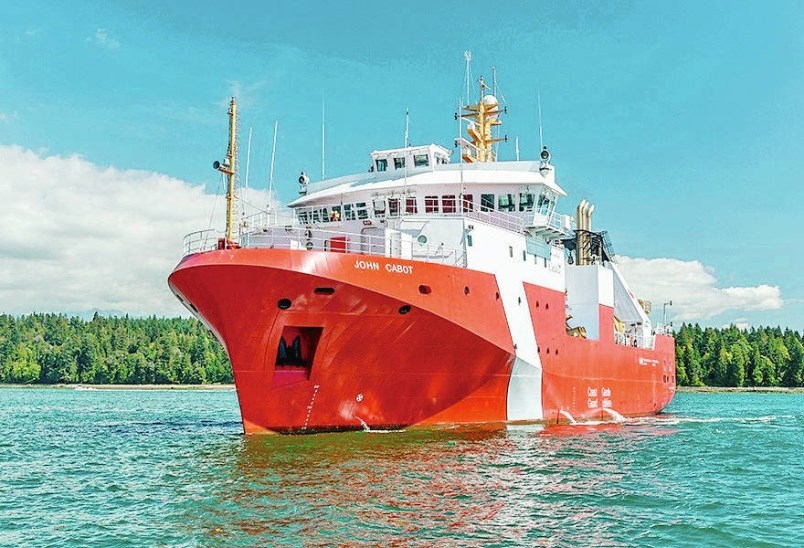The Canadian Coast Guard’s new John Cabot offshore fisheries science vessel has sailed out of Victoria toward its home port of St. John’s, Newfoundland and Labrador.
“It will serve as the primary platform to conduct scientific research, as well as support other Coast Guard programs and services such as environmental response and search and rescue,” a Coast Guard official said in a Tuesday statement.
“The CCGS John Cabot is expected to enter into service in spring 2021, when Fisheries and Oceans Canada scientists and crew will have a chance to complete further training on the vessel and its science systems.”
Its first science mission is slated for this summer.
The 208 foot-long vessel sailed out of Ogden Point on Tuesday. It will stop on the Pacific side of the Panama Canal for inspection and refuelling.
It is expected the entire trip will take about 30 days.
It is being crewed by members of the Coast Guard after training and a vessel-familiarization period in Victoria. This included frequent trips to sea around Vancouver Island.
“This also gave an opportunity for Vancouver Shipyards [the builder] to address some outstanding work items prior to the vessel’s departure,” the Coast Guard said.
Painted in the Coast Guard’s traditional red-and-white colours, the John Cabot is one of three science vessels built by Seaspan at its shipyard in North Vancouver, ordered under the national shipbuilding strategy.
In 2011, Seaspan won the rights to negotiate contracts to build non-combat vessels for the Canadian Navy and Coast Guard in a program to renew Canada’s fleet. Under the plan, Seaspan anticipates constructing up to 17 vessels valued at $8 billion.
The agreement has led to a resurgence in shipbuilding on B.C.’s coast, providing education and jobs in what had been a declining and unsteady industry.
Dr. Bonnie Henry, provincial health officer, officially launched the nearly complete John Cabot in July, smashing a bottle of champagne at Seaspan’s North Vancouver shipyard.
Sea trials started six weeks later. Trials at sea put vessels through various exercises to ensure the ship and its technology are functioning as expected.
The John Cabot follows its sister ships CCGS Capt. Jacques Cartier and CCGS Sir John Franklin, which were both launched in 2019.
The ships have been designed to serve as state-of-the-art floating laboratories. Each is equipped with four types of labs.
“These offshore fisheries science vessels are the government of Canada’s first-ever vessels purposely designed and built for offshore fisheries research science and monitoring,” the Coast Guard said.
“These vessels will enable Fisheries and Oceans Canada to collect key information necessary for the sustainable management of Canada’s oceans and aquatic resources for the benefit of current and future generations.”



